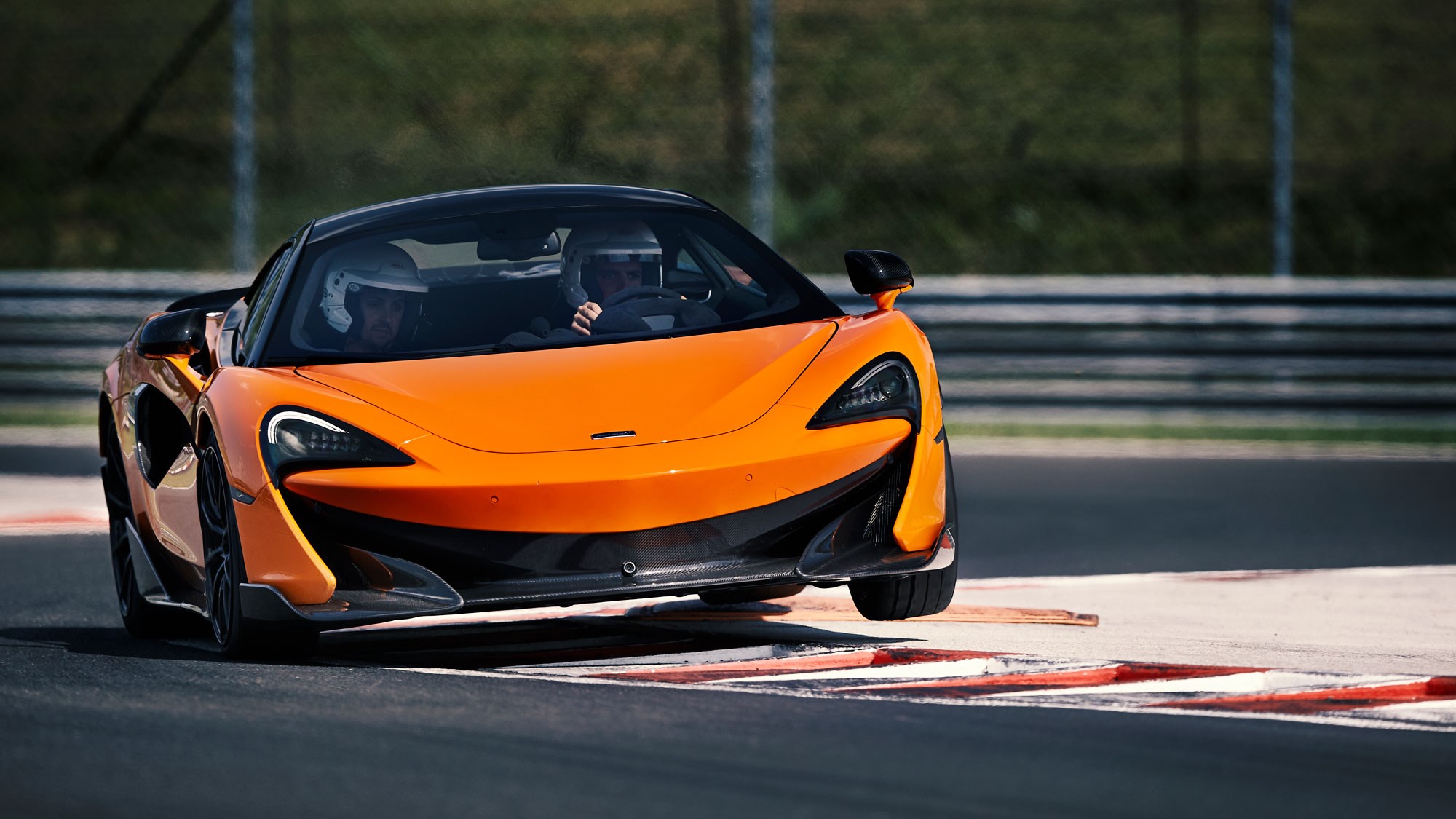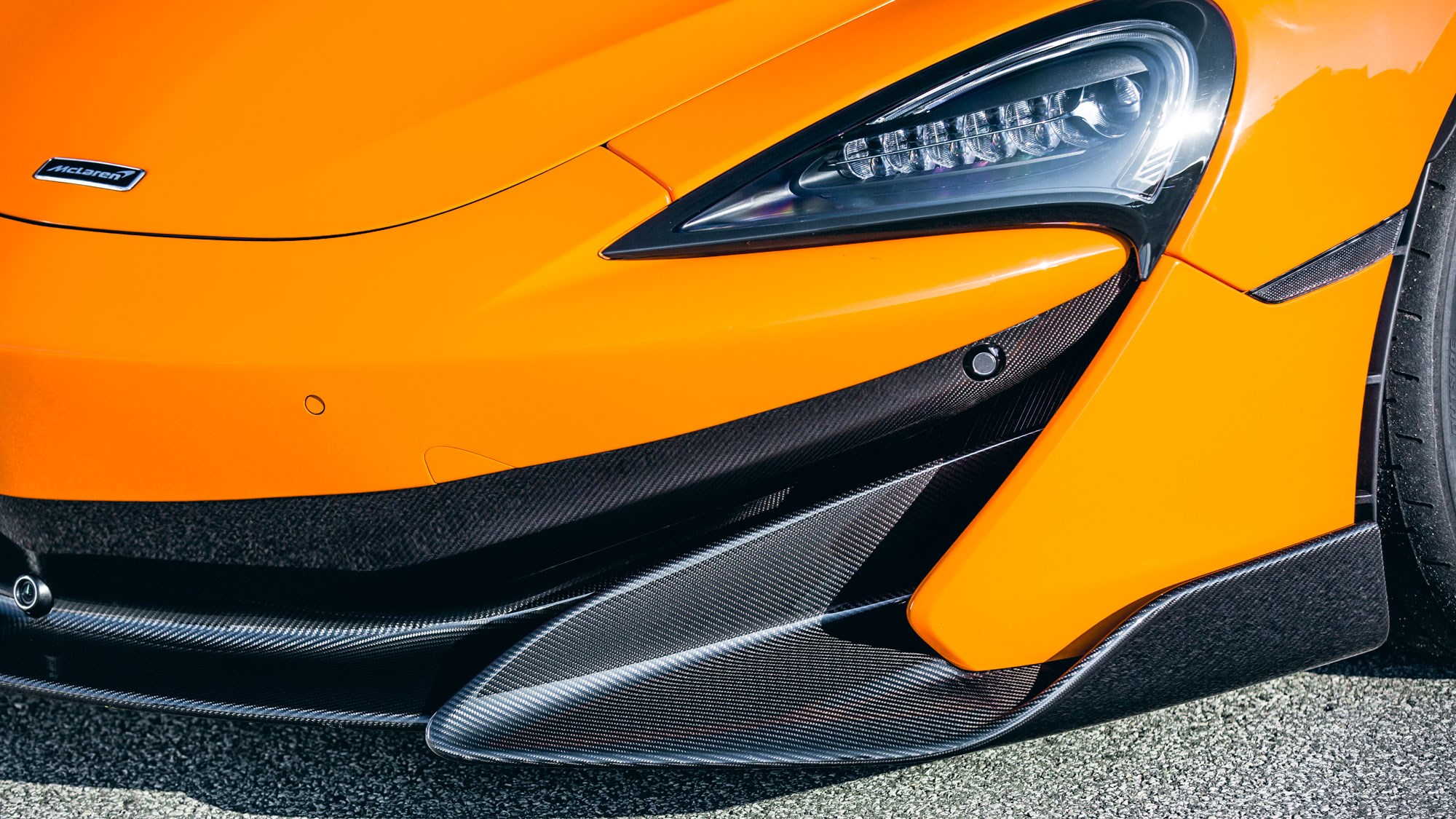► McLaren’s new Longtail
► 600LT has 562bhp
► Punchiest Sports Series yet
The McLaren 600LT – for Longtail – is the most extreme and expensive version of McLaren’s Sports Series – it’s cheapest, most accessible model range. Based on the already highly impressive 570S, the LT adds power, cuts weight and puts a more uncompromising twist on driving dynamics. McLaren claims 23 per cent of parts are new.
Significantly, the 600LT also marks the handover between ex-chief test driver Chris Goodwin, who now works for Aston, and his replacement, racer Kenny Brack. Both are said to have contributed to development – Brack’s feedback, for instance, is apparently behind the uprated brake booster and the firmer pedal feel that resulted.
The 600LT is on sale now for £185,500, with build slots allocated for 12 months from October 2018, though there’s no official cap on numbers. A Spider will follow in 2019.
We’re driving the 600LT coupe at the Hungaroring F1 circuit.
How much longer is the 600LT than a 570S?
Not much, but that’s not really the point. It’s more that McLaren has taken inspiration from the F1 GTR Longtail, the most extreme evolution of its Le Mans racecar, which debuted in 1997. McLaren first dusted off that name again for 2015’s 675 LT, the most driver-focussed version of its first-generation Super Series, and a brilliant car it was too.

The Sports Series range sits one rung down but aims to replicate that car’s highly distinctive and tactile feel. New carbonfibre parts and more (see below) help drop weight by 100kg to 1247kg (without fluids, but with almost every lightweight option possible, bar the full carbonfibre roof and pillars, which shed a further 4kg), while the overall length of the 600LT increases by 74mm thanks to a new front splitter, rear diffuser (both longer says McLaren. Longer!) and fixed rear wing. So the Longtail is longer, definitely longer, but it’s more about that bloodline and the philosophy behind the car than the literal lengthening. The new aero parts also increase downforce, up from the ‘neutral’ 570S to a max of 100kg at 155mph for the LT.
Where has the weight saving come from?
It’s a long list, but the biggest reductions come courtesy of carbon seats from the P1 (-21kg), forged alloys with Pirelli Trofeo R tyres (-17kg), making air-con a no-cost option (-12.6kg), shorter top-exit exhausts (-12.6kg), and the carbon splitter, rear diffuser and sideskirts (-7.2kg).
Tell me about the performance…
The 600LT gets the same 3.8-litre twin-turbo V8 and seven-speed dual-clutch as the 570S, but power increases from 562bhp/443lb ft to 592bhp/457lb ft, purely based on calibration changes, not hardware (the last LT had significant engine hardware revisions). Combined with the weight decrease, that equates to 474bhp-per-tonne, a 46bhp improvement over a 570S.

New top-exit stainless steel exhausts are also far shorter, for reduced back pressure, and the side inlets are enlarged to improve cooling. The gear shifts are said to be around 25 per cent quicker, and use the cylinder-cut and intertia-push technology already seen on other McLarens – platform engineering director Carlo Della Casa says the learnings came from the Senna, the downshifts are particularly improved, and the actual shift times are ‘around 40-50 milliseconds’.
Against the stopwatch, McLaren claims 2.9sec from zero to 62mph, 8.2sec to 124mph and a 204mph top speed (570S: 3.2sec, 9.5sec and 204mph).
The word is that the 600LT will trade blows with a 675LT on circuit – the 600 winning in the corners, the 675’s extra power apparently clawing back the deficit on the straights – but that a 720S is still significantly quicker. That’s certainly how it feels.
But where the previous 675LT really impressed wasn’t with its performance (exceptional as that was), it was with the added precision and feel that came from its steering, chassis, pedals and paddleshifts. The 600LT aims to carry on where the last LT left off: the engine mounts are stiffer, the steering 3 per cent quicker, responses from the throttle and brakes are said to be sharper, Pirelli Trofeo Rs are standard, and forged aluminium double-wishbone suspension and the carbon-ceramic brake set-up carries over from the 720S (saving another huge 14.2kg alone). Adaptive dampers carry over, but are re-tuned, and the suspension is lowered by 8mm and the front track wider by 10mm. Spring rates are up 13 per cent at the front, 34 per cent rear.
What’s it like to drive?
McLaren benchmarked its own 675LT during development, trying to infuse the 600LT with the same rawer, more focussed feel that it so definitively established with that car. It doesn’t take long behind the wheel to see they’ve succeeded, though perhaps this isn’t a huge surprise given the large amount of shared componentry between the two.

At a relatively gentle pace, you quickly notice the extra definition in the electro-hydraulic steering versus the 570S, its perfect weighting and natural self-centring effect and the way every tiny input has an effect; immediately you feel highly connected to a very wieldy machine, though I’m not sure I’d have noticed that the rack is actually faster.
I did notice the reduced body roll, the slack that’s been taken out of the brake pedal for a firmer feel (never a 570S forte), and the crisper pop of the downshifts in particular. There’s also a more pleasing growl from the top-exit exhausts and just the right amount of tingle through the driver’s seat – though our test car had the larger of the two Senna-spec carbon seats, which offered similar lateral support to shower chairs for elderly adults. The smaller size or a few more pies would’ve solved it.
Drive the 600LT harder and the chassis balance is pretty delicious and easy to quickly trust and exploit. There’s ultimately still some safety understeer if you clumsily go looking for it, but the limits are significantly higher and are progressively breeched. Trail the brakes in to a corner, keeping the weight over the front end, and there’s a lovely positivity to the way the 600LT locks on to the apex. It’ll also gently rotate about its middle, helping the car turn – so long as you’re in Track mode you can also squirt the 600LT out of the bend with the rear tyres fizzing and a few degrees of attitude, though the lesser modes quite abruptly clamp down on the fun. All this on-limit behaviour is intuitively easy to read and properly exciting too, and all the while you’ve got those carbon-ceramic brakes watching your back, with their reassuringly strong initial bite and deep reserves of stopping power; they never noticeably wilted during our six-lap stints.
The performance upgrade plays second fiddle to the chassis for this LT overhaul, but impresses. This is an engine that still takes a while to get into its stride, needing around 3500rpm for the turbochargers to really ignite, but that will be more noticeable at lower road speeds. The rawer sound and the more intense acceleration when the turbos are lit make the 600LT a more engaging drive, and there’s a likeably frenzied rush to the redline though the 570S is by no means a disappointment.

Upshifts are quick, but while the downshifts are quick enough, they can feel a little tardy during very quick driving. Strange, because the gear engagement feels so crisp and positive at a less frantic pace.
Verdict
The 675LT and 570S have been two of our favourite cars of the last few years, and McLaren has successfully bridged the gap with the 600LT. But it’s the Longtail character that most clearly shines through: that feeling of granular texture and taut response that floods back from the controls and defines the way the car behaves.
The Ferrari 488 Pista and McLaren 720S operate on a higher plane of performance, but the difference really is more down to acceleration, because in terms of chassis, the 600LT by no means feels the poor relation.
We’d still prefer more response low-down the rev range and the downshifts didn’t always convince on track – the cheaper (but almost unobtainable) Porsche 911 GT3 RS scores more highly in both these areas, and at least holds its own in terms of chassis and steering. Ultimately, though, the 600LT strikes a fine balance between visceral thrills for the expert and forgiving tolerance for the less experienced. And it absolutely convinces as a Longtail. All we need to discover now is how it feels on the road.